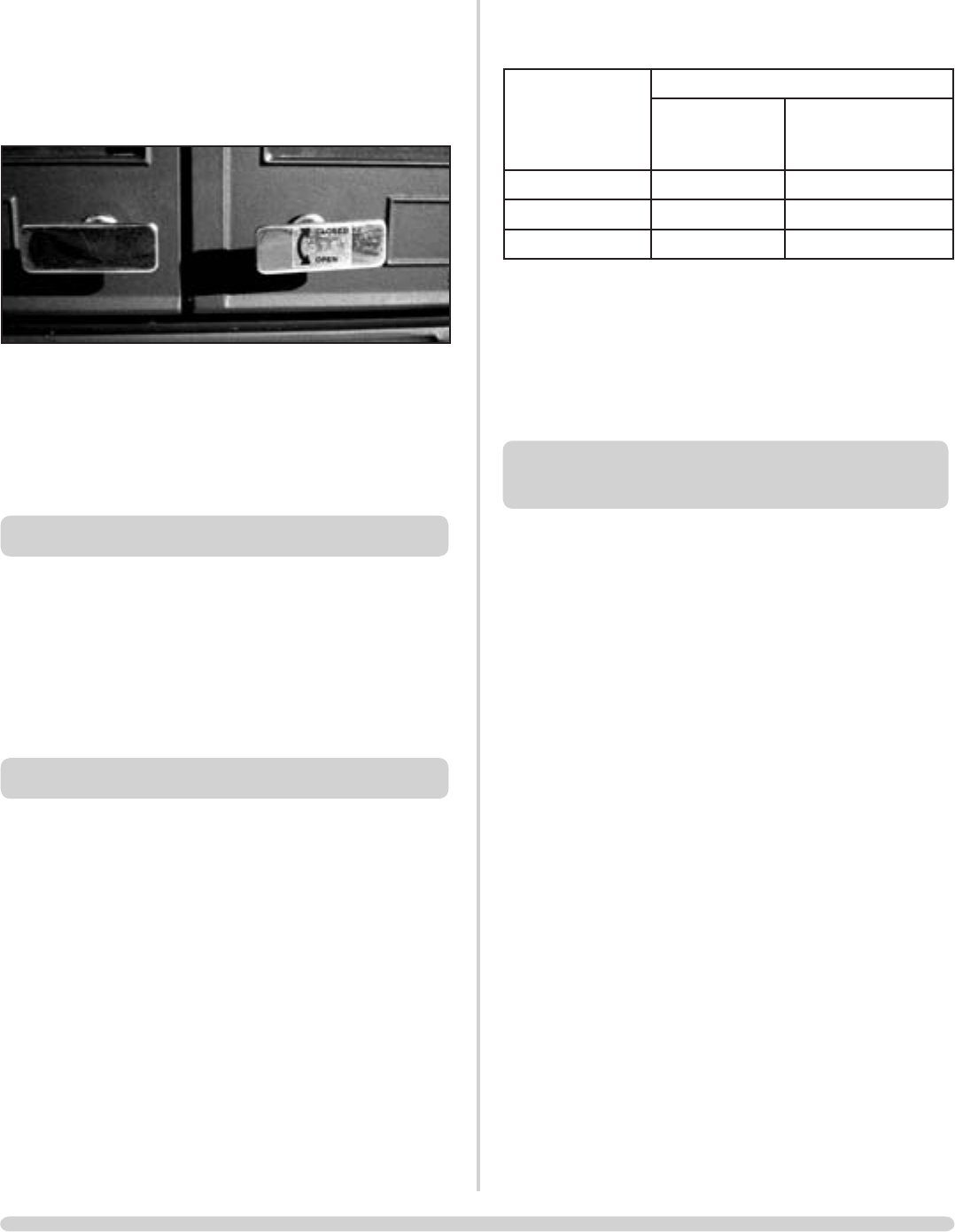
5
OPERATING INSTRUCTIONS
DOOR HANDLE
1.12 To Open and Close: Use a protective gloved hand to
operate.
1.13 Rotate RH Knob anti-clockwise to open. Rotate clockwise to
close.
1.14 Warning: Do not force the handle to turn more than 1/4
turn as damage may occur.
1.15 Never open the door with your bare hands.
1.16 Closing the door is the reverse of the previous.
2. USING THE STOVE FOR THE FIRST TIME
2.1 When new, it is best to burn the fire at a low output for
the first few days of use. This will allow the construction to
settle and all fixing glues and paint to fully cure.
2.2 Avoid touching the paint during the first period of use.
2.3 During this time the stove may give off some unpleasant
odours, and we recommend that you keep the room well
ventilated during this period to avoid a build-up of fumes.
3. RECOMMENDED FUELS
3.1 Wood: Burn only seasoned timber, with a moisture content
of less than 20% with a recommended cut length of
300mm. In most cases, this would require drying cut wood
for 12 to 18 months before use. Poor quality timber could
cause low combustion efficiency, produce large amounts of
harmful condensation, which could reduce the effectiveness
of the airwash system, and ultimately the life of the stove.
3.2 Do not burn construction timber, painted, impregnated
/ treated wood, manufactured board products or pallet
wood.
For more details on using wood see Section 9 Burning
Performance, page 7.
3.2 Solid fuel: Burn only anthracite or a manufactured
briquetted smokeless fuels, listed as suitable for use with
closed heating stoves. Do not burn bituminous coal,
‘petro-coke’ or other petroleum based fuels, as this will
invalidate the product guarantee.
3.3 Fuel consumption at nominal heat output.
As tested at nominal heat output to the requirements of EN
13240: 2001 for intermittent operation.
Description
Fuel Consumption
Kg/hour
Wood
Kg/hour
Briquetted
Smokeless fuel
Sheraton 7016 2.66 -
Sheraton 7017 2.66 1.12
Sheraton 7027 2.66 1.12
3.4 If you require advice on suitable solid fuels contact your
local approved coal merchant. Details can be obtained by
ringing the Solid Fuel Association advice line on Freephone
0845 601 4406. Or their web site at www.solidfuel.co.uk
A number of factors can affect the performance of the
stove. Some of these are listed, see Section 9 Burning
Performance, page 7.
4. BURNING WOOD
(Wood and multi-fuel stoves)
4.1 Open the Airwash control fully and open the Primary/
Thermostat* air control (multifuel versions only) to
approximately 25% open.
4.2 Place some pieces of firelighter or dry crumpled paper on
the grate and cover with some small pieces of dry kindling
wood. Light the paper or firelighters.
4.3 To avoid the build-up of condensation on the door glass
it is advisable to leave the door slightly open as the fire
establishes, and the glass warms.
4.4 As the fire becomes established add a few larger pieces
of wood and fully close the door. Do not initially add too
many logs as this may smother the fire. Do not leave the
stove with the door open as this could over-fire the stove
and cause permanent damage.
4.5 As the fire becomes established close the Primary/
Thermostat* air control (multifuel versions only) and control
the burn rate using the Airwash control only.
4.6 To burn wood efficiently it is best to allow a bed of ash to
build-up on the grate, or the base of the stove, and control
the combustion using the Airwash control only.
4.7 Before re-fuelling the stove it is advisable to first rake the
embers evenly over the firebed then open the Airwash
control fully for a few minutes, to establish a glowing bed
before adding new logs.
4.8 Allow the new logs to burn at high output for a few minutes
before adjusting the burn rate with the Airwash control,
to the desired setting. It is best to refuel little and often to
maintain clean and efficient burning.


















